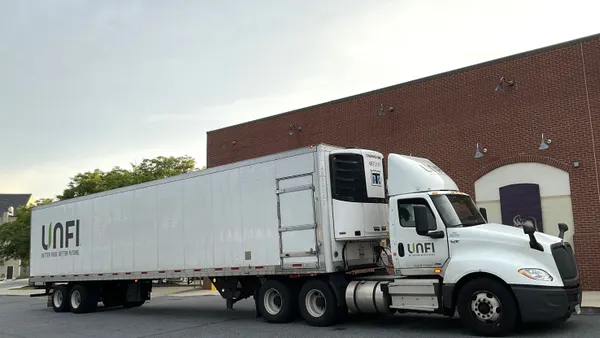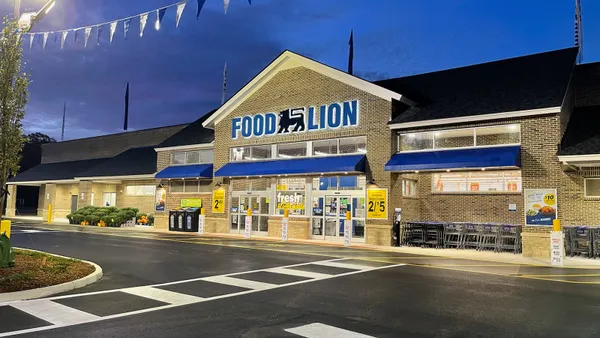The problem is all too familiar: those cases of baked beans needed urgently at the store in Dallas mistakenly ship to a location in Ft. Worth. No grocery retailer is immune. In spite of rigorous logistics and painstaking attention to detail, the grocery industry has come to generally accept an average 2 to 4% annual mis-ship rate, adding up to significant cost.
However, leading retailers are finding a way to battle this costly challenge. By leveraging technology – specifically RFID – these “ahead of the curve” retailers are transforming the precision and efficiency of their shipping & receiving operations, significantly improving their bottom line.
RFID tags use sensors and antennas to transmit data wirelessly. Each tag has a unique ID, and a reader can scan hundreds of tags simultaneously, even without direct line of sight, automating slow, error-prone manual processes. RFID-encoded labels applied at the DC have demonstrated multiple advantages over traditional non-intelligent warehouse pick labels:
- Reduce chargebacks
- Improve inventory accuracy
- Optimize labor efficiency
Depending on the size and scope of the retail operation, there is the potential for grocers to save millions of dollars annually with an ROI payback within six to nine months.
Chargeback reductions
Among the many advantages of RFID, improved shipment verification has a significant impact on reducing a costly pain point for retailers: chargebacks due to mis-shipments.
The ripple effect of mis-ships not only steals dollars from retailers' bottom line, but also costs stores significant time and energy to rectify. When multiple cases don’t end up where they belong, the store that did not receive the product has to make arrangements to bring in replacement inventory (costing an average $200 per incident) — or risk running out of stock. RFID is the not-so-secret weapon retailers are increasingly adopting to get shipments right the first time, preserving critical margin by recouping avoidable costs.
Applying RFID labels at the DC provides retailers unprecedented visibility to ensure outbound shipments are accurate and inbound orders flow into the right stores, avoiding costly chargebacks.
Inventory accuracy
Upgrading traditional warehouse pick labels to intelligent RFID labels has the potential to significantly benefit store inventory accuracy. Cases of inventory are verified at the outbound DC shipping area – ensuring the right pallets are loaded on the right trucks going to the right stores. Doubling down for maximum accuracy, inbound cases of inventory can be immediately verified at the store receiving area, enabling rapid confirmation of exactly what has been delivered at each individual location.
Faster, more rigorous shipment verification processes give retailers the assurance of the right product making it to the right location — reducing out-of-stocks. Better on-shelf availability translates to a better shopping experience for customers, increasing sales lift and reducing waste.
Labor optimization
One of the greatest benefits of implementing RFID technology is the ability to nearly eliminate the labor burden of extremely time consuming manual processes, both at the DC and at in-store receiving. Take, for example, a scenario where four pallets arrive at the store on a truck. If those cases are RFID tagged, within seconds upon delivery the store associate knows exactly what has been received with the wave of a wand (i.e. an RFID handheld reader). They aren’t just processing an assumed receipt or trusting that the ASN is correct until days later when staff can actually work through the pallets. With no line of sight required, employees don’t have to unpack, find and scan every bar code to get the data. RFID scanners work quickly and efficiently even through layers of shrink wrap.
If the product delivered is correct, the receiving team gets immediate validation that an accurate, complete order has arrived. If they identify a problem, they can reconcile omissions or discrepancies right then and there without having to wait to work through the pallet. Swift communications and corrective measures ensure any issues are addressed and fixed in a timely manner.
Implementing RFID labels at the DC requires minimal change in activity for associates. Assuming pick labels are currently applied, those labels are simply replaced with RFID encoded labels. RFID streamlines the product journey, ensuring a smoother workflow from the warehouse to the store, ultimately providing a better customer experience and maximizing sales.










